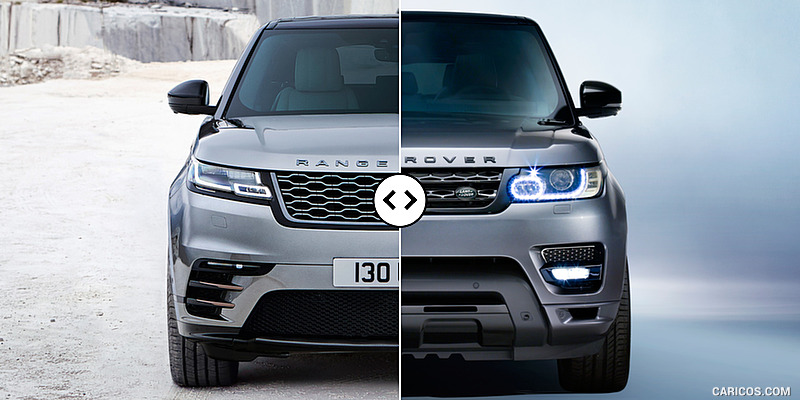Velar vs Sport
Recently Range Rover added the fourth model to its SUV lineup, giving us the chance to make comparisons between the Velar and its rivals. But that didn't really go as we first planned, because Range Rover positioned the Velar between Sport and Evoque models, which means it's smaller than the GLE-X5 segment and bigger than GLC-X3 competitor group.
After trying to find an SUV/Crossover that could be sensibly compared to the Velar, we gave up and decided to follow the notion of, "when there is no way out, go deeper in." That said, let's begin by identifying where 2018 Velar stands in the family lineup.
Exterior
The design of Range Rover velar echoes cues adopted by the company. Headlights are formed inside two LED ovals which get sharper edges, and solid glow, for the Velar. The roof is significantly lower, which is one of the key differences between the two SUVs. Rear end gets more pointy design, compromising the luggage area, but giving the SUV more sporty appearance. Looking at the dimensions we find the true source of our initial confusion, as Range Rover Velar is only two inches shorter than Sport. Width is less than two inches narrower, but height is almost five inches less than that of Sport's, giving Velar that chop-top look.
Interior
If the key difference on exterior design was the lower roof, then for interior that would be the absence of two third row seats. That means Range Rover Sport is the only model with three-row seating currently offered by the company. Cockpit is fresh and with larger central console display in the Velar. Below the central display you'll see more touchscreen controls, which are old-style analogs in Sport. Another difference that pops out is the absence of drive selection lever, which in Velar's case is a round control knob, like in cousin Jaguar models. Surprisingly enough, lower roof hasn't compromised head room; difference is -0.2 and -0.3 inches for first and rear seats, respectively.
Powertrain
U.S. customers can configure the Range Rover Velar with three engine options: two petrol and one diesel. The powerful petrol engine, a 3.0-liter V6, produces 380 hp and 332 lb-ft of torque, making the Velar reach 60 mph in 5.3 seconds. That same engine is offered for Sport under HSE trim line, but because of heavier construction Range Rover Sport HSE reaches 60 mph from zero in 6.9 seconds. Of course a Range Rover wouldn't be one if it had rear-wheel or front-wheel drive system; both SUVs come with all-wheel drive drivetrains and 8-speed auto transmissions. EPA numbers aren't out yet for the Velar, but expect it to be less gas-thirsty than the Sport.
Pricing
Stateside, 2018 Velar will go on sale later this year with a base msrp of $49,900 for the base 2.0-liter turbo model. That number jumps up to $77,100 if want to get the Velar R-Dynamic HSE model, and up to $89,300 for exclusive First Edition models. 2017 Range Rover Sport is offered from $65,650 for SE trim line, while top-of-the-line Sport Autobiography is priced from $94,450.
